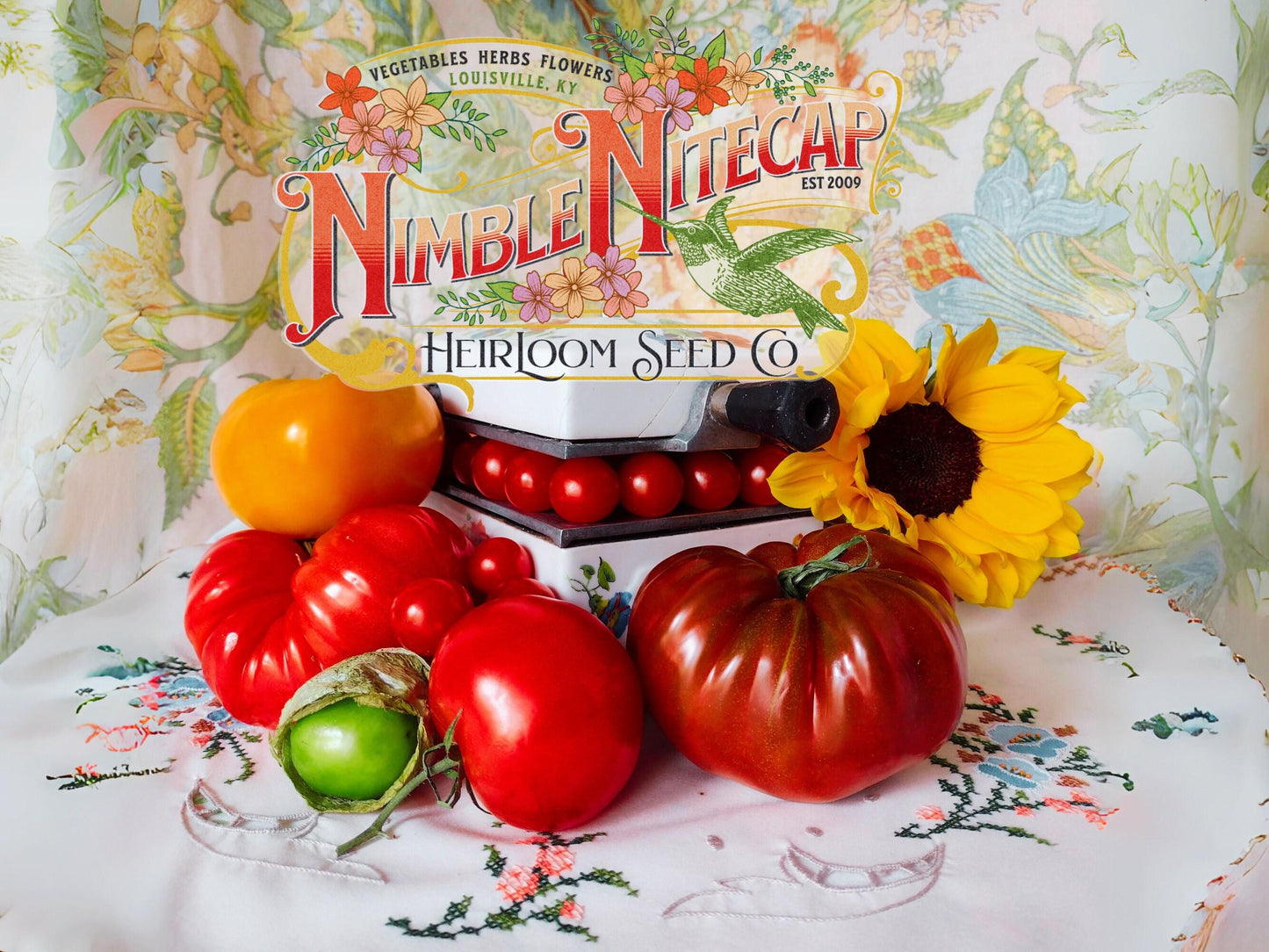Snapdragon Tetra Mix (Antirrhinum majus) is a vibrant heirloom variety known for its tall spikes of vividly colored blooms in shades of pink, red, yellow, white, and purple. This easy-to-grow annual is a favorite for cottage gardens, borders, and cutting beds. Snapdragons thrive in full sun to partial shade and well-drained soil, blooming continuously from spring through fall. Their long-lasting flowers make excellent cut flowers, and their whimsical blooms attract bees, butterflies, and hummingbirds. Though grown as an annual in many regions, Snapdragons can sometimes act as short-lived perennials in mild climates, providing even more value to your garden.
SCROLL DOWN FOR DETAILED GROWING INFO
All Nimble NiteCap Seeds are:
- Heirloom
- Organic
- Non-GMO
- Open Pollinated
- Untreated
- US Grown
- Growing instructions included
- Regular testing is conducted to uphold the highest germination standards, all the while employing appropriate seed storage techniques.
Sustainable Packaging & Shipping:
- NimbleNitecap seeds are packed in eco-friendly, compostable seed packets. Seed packets are printed in-house with vegetable-based inks on biodegradable, recycled materials. (Small plastic bags are infrequently used to prevent the loss of very small seeds.)
- All orders are carefully packed and shipped with tracking via USPS First Class (or Priority, if selected) in padded ECOENCLOSE recycled and reusable mailers, or recycled boxes to protect your items in transit.
- Most orders ship out the same or next business day! Please note that this time may be extended during peak season.
- FREE SHIPPING on all orders of $35 or more. Flat Rate shipping no matter how many packets you order.
Common Names: Snapdragon Tetra Mix
Latin Name: Antirrhinum majus
Type: Flower
Life Cycle: Annual (Perennial in some regions)
USDA Zones: 7 - 10 (perennial), 3 - 10 (annual)
Stratification: Not Required
Germination Ease: Moderate
Sunlight: Full Sun to Partial Shade
Moisture: Moderate
Soil: Well-drained, nutrient-rich soil
Height: 18-24 inches
Spread: 12-18 inches
Color: Mix of pink, red, yellow, white, and purple blooms
Bloom Season: Spring through Fall
Companion Plants: Carrots, Lettuce, Beans (Snapdragons attract beneficial insects that help protect nearby crops from pests.)
Potential Toxicity: Non-toxic
Climate Adaptability: Thrives in cooler climates and can tolerate light frosts. In warmer climates, it blooms best in spring and fall.
~ Sowing ~
When to Sow Outside:
Sow directly outdoors in early spring, 2-4 weeks before the last frost, or in fall in warmer climates for blooms the following spring.
When to Start Inside:
Start indoors 8-10 weeks before the last frost for early blooms. Transplant seedlings when soil is workable.
Days to Emerge:
10-20 days
Seed Depth:
Surface-sow seeds; do not cover, as light aids germination.
Seed Spacing:
Space seeds 6-12 inches apart.
Hardiness:
Somewhat frost-tolerant; can handle light frosts and may overwinter in milder climates.
~ Growing ~
Soil:
Snapdragons prefer well-drained, nutrient-rich soil. Amending soil with organic matter will promote healthier blooms, but they can tolerate poorer soils.
Watering:
Water regularly, especially during early growth and hot weather. Snapdragons prefer consistently moist soil but avoid waterlogging.
Light and Temperature:
Thrives in full sun to partial shade. Snapdragons bloom best in cooler weather and can tolerate light frosts, making them ideal for spring and fall gardens.
Maintenance:
Deadhead spent blooms to encourage continued flowering throughout the season. Snapdragons can reseed themselves in mild climates, though cutting them back can help extend blooming.
Container Friendly:
Snapdragons can be grown in containers, especially dwarf varieties. Ensure the pot has good drainage and is deep enough for the roots.
~ Harvesting ~
When to Harvest:
Harvest flowers when about half of the blooms on the spike have opened for the longest vase life.
How to Harvest:
Cut stems at the base with sharp scissors or pruning shears.
Drying and Storing:
Snapdragons can be air-dried for dried flower arrangements. Store dried flowers in a cool, dark place.
Edible Use:
Not typically edible, but Snapdragons are often used for ornamental purposes in flower arrangements.
~ Seed Saving ~
Seed Collection:
Allow seed pods to dry on the plant. Once they turn brown and dry, collect the seeds.
Seed Cleaning:
Remove seeds from the dried pods and air dry them completely before storing.
Seed Storage:
Store seeds in a cool, dry place. Seeds remain viable for 1-2 years if properly stored.
~ Additional Information ~
Forage for Pollinators:
Snapdragons attract bees, butterflies, and hummingbirds, making them a wonderful addition to any pollinator garden.
Origin:
Native to the Mediterranean region, Snapdragons have been cherished for centuries for their unique dragon-shaped blooms.
Nomenclature:
The name *Antirrhinum* comes from the Greek words “anti” (like) and “rhin” (nose), referring to the flower’s resemblance to a dragon’s snout.
History:
Snapdragons were traditionally used in European gardens and are often featured in Victorian-era floral arrangements due to their striking appearance and long-lasting blooms.
Potential Toxicity:
Non-toxic to humans and animals.
Climate Adaptability:
Snapdragons thrive in cooler temperatures and are frost-tolerant. In warmer climates, they perform best in spring and fall when temperatures are mild.













